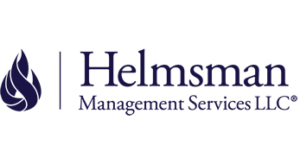
Consumers expect businesses to be authentic in their commitments to environmental, social, and governance (ESG) policies, so much that ESG has become a reflection of a business’ core values. The reality is that if businesses make promises they don’t keep, the consequences can be steep – on both reputations and bottom lines.
Here, we’ll look at the relationship between ESG claims and risk, and how businesses can ensure their intentions and actions hold up to consumer scrutiny.
The high cost of doing nothing
Environmental and social consciousness have become a table-stake requirement for many consumers who want to know that businesses are transparent and showing their progress on key ESG issues. Making empty promises around ESG can result in consequences for a business – both financially, as well as for its brand.
The following are specific examples of how companies might be affected by a lack of ESG initiatives:
- Businesses that don’t follow SEC climate change disclosure mandates, which state that companies must be transparent about their carbon footprint, may face both legal and financial repercussions.
- Businesses that allegedly cause harm to the public may face public nuisance lawsuits. For example, we’ve seen these types of lawsuits brought against companies that produce tobacco. Today, however, experts suggest that businesses could also be sued for negligence that results in a detrimental impact on the environment.
There are less obvious financial repercussions for companies that don’t prioritize ESG – like low employee retention rates or losing customers to more environmentally or socially conscious competitors. For example, consumers and investors alike have rallied around companies like Unilever, which recently committed to pay its employees a $16 minimum wage.
Today, consumers want more than temporary solutions or half-hearted efforts – they want to see permanent and systemic changes in how business is done. For businesses, relationships with vendors, partners, and investors are possible areas of scrutiny that can open them up to potential liabilities. While it takes more effort to ensure compliance in today’s environment, companies that go the extra mile will reap the benefits.
How your business can better manage ESG-related risks
While ESG is still in its early years, customers want to see that businesses are engaging in a transition toward more ethical business practices, and now is the time to start making proactive changes.
The following are five components for building an effective ESG program. While they may seem like common sense, the challenge lies in a business successfully implementing them across the organization.
- Have senior leadership commit to ESG as a core initiative. A comprehensive map isn’t needed to start your company’s ESG journey — only a clear and decisive commitment that should start with the board of directors and the C-suite.
- Understand the leading exposures without ignoring others. Don’t inadvertently focus ESG programs on the obvious exposure at the expense of others. For example, a manufacturing business may address E but not S, despite the business having a large impact on the community in which it operates. Make sure you are looking at things holistically as issues tend to be interconnected across E, S, and G.
- Build a strong structure to create engagement throughout the company. Your company’s management sets the tone and expectations for a successful ESG program, but fully engaged employees drive results. A dedicated unit is helpful in developing and managing a strategic ESG plan, engaging employees to craft and communicate policies, tracking and reporting results, and suggesting modifications to the plan.
- Break down silos and geographies for a consistent approach. This should also include operations that can impact the broader community. For example, businesses should include ESG considerations when selecting vendors and philanthropic partners, as well as in all advocacy efforts.
- Maintain ongoing employee communications that set expectations, give direction, and are transparent when it comes to reporting. In addition to understanding the importance of ESG as a driver of the company’s success and how it will drive day-to-day decisions, youremployees at all levels need to know their role in the ESG journey. Along the way, they should understand that there will always be more to accomplish.
There has never been a more important time for your business to take a closer look at its vendors, suppliers, and partners to ensure they are all working with sustainable and socially responsible businesses up and down the supply chain. You should also look at your internal hiring and work practices and anticipate a high level of transparency with your customers.
Conclusion
As your business transitions into a more all-inclusive workplace, it is to your benefit to work with your third-party administrator (TPA) to evaluate potential liabilities, prepare for future risk, and understand common elements of successful ESG journeys. By sharing your company’s ESG strategy with your TPA and broker, you can have productive conversations about risks and opportunities as you align your mission with today’s most important social and political issues.
Featured insights
This website is general in nature and is provided as a courtesy to you. Information is accurate to the best of Helmsman Management Services’ knowledge, but companies and individuals should not rely on it to prevent and mitigate all risks as an explanation of coverage or benefits under a policy or service contract. Consult your professional advisor regarding your particular facts and circumstance. By citing external authorities or linking to other websites, Helmsman Management Services is not endorsing them.





